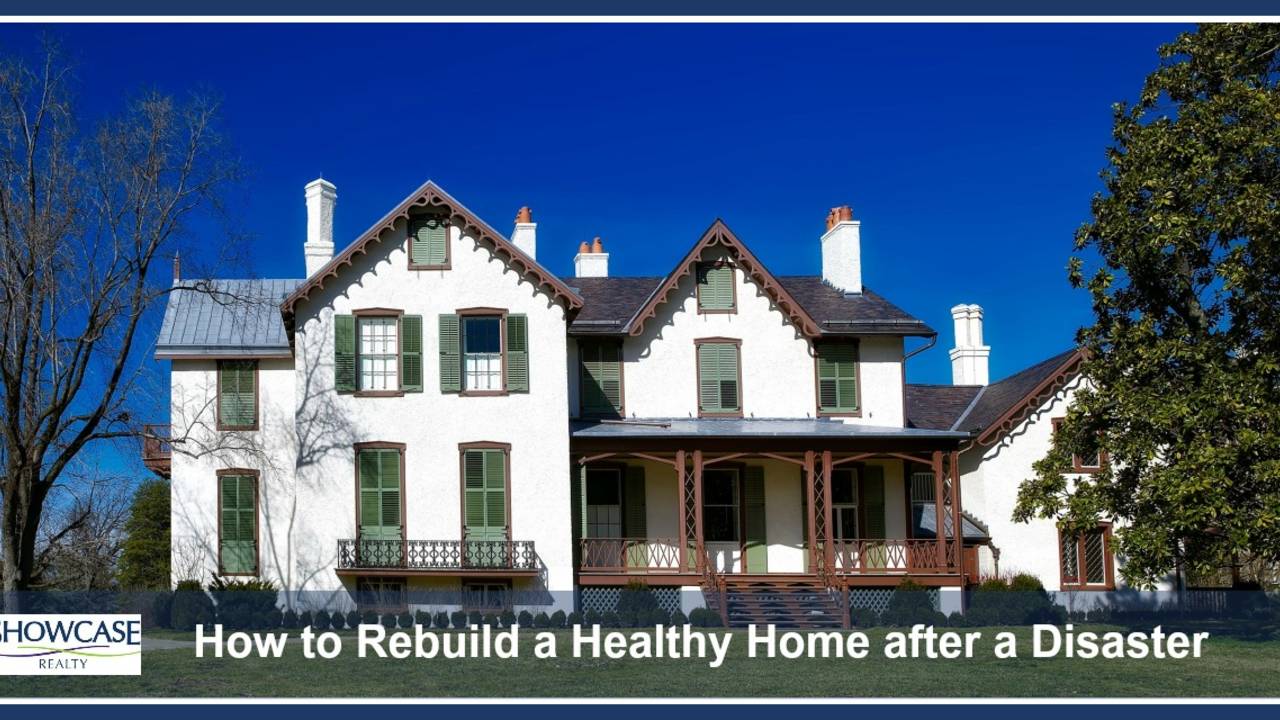Catastrophic events can destroy homes and cost millions of dollars in property damage.
If your Charlotte NC home has been damaged by a natural disaster -- flood, fire, tornado or hurricanes -you’ll probably need to deal with repairs. There are lots of things to think about when you face the need to rebuild after a disaster.
The U.S. Department of Housing and Urban Development highlights putting people first when rebuilding damaged homes. They also remind the public to wait for proper authorities to give the go signal before returning to damaged properties.
Here are some tips on how to rebuild a healthy home after a disaster:
Always prioritize people over property. Your life and your family’s safety are far more important than whatever valuables you may own.
Don’t forget to wear personal protective equipment (PPE) such as safety helmets, gloves, eye protection, high-visibility clothing, safety footwear and safety harnesses. Use a NIOSH-approved respirator when entering a damaged or moldy building.
Make sure to check for structural ability and hidden hazards before entering a damaged property. If possible, hire a professional home inspector to assess the structural damage to your home.
Make a plan which includes the supplies and methods you will use in rebuilding your damaged home. Create a map showing the disposal and clean-up site layout. Go over your insurance policies and disaster assistance resource and establish with your insurance agent what your policy does and does not cover.
If your home was built before 1978, assume lead-based paint and asbestos are in your property unless verified not present. Remember that disturbing such materials increases the hazard. Read this for more information on the hazards of homes built before 1978.
Go slow when pumping out water, then act fast to dry out and remove mold. Study and share the DIY Mold Removal Guidelines sheet from the Rebuild Healthy Homes guidebook.
Remove wet insulation and foam padding, even if the surface looks dry and clean. Discard all wet and moldy fibrous and open cell foam insulation.
Control dust, capture debris and contain contaminants – with wet methods, drop cloths, debris bags, and workers trained in safe work practices.Keep children and pregnant women away from any area that might have lead dust or debris. If using power tools or sanders, a HEPA filter vacuum attachment is necessary.
Always check credentials and hire only licensed and insured contractors, Lead-Safe Certified Renovators, certified Asbestos professionals, Mold Remediation Contractors, Fire and Water Damage Restorers, and other professionals, depending on type of work needed. You may also check your state’s contractor licensing agency for lists of licensed or registered general and specialty contractors.
Restore for More than Before! If you do so, you will be rewarded with a stronger, safer, more resilient, durable, comfortable, convenient and healthy home. Install hazard-resistant materials, connectors and building systems. Make sure to include energy-saving and healthy home improvements.
We cannot control the types of disasters that may strike. What we can do is prepare and hope for the best.
Visit http://ShowcaseRealty.net for other helpful tips and safety reminders.
Call me, Nancy Braun, at (704) 997-3794. I can provide you with additional information about having and restoring healthy homes.


Comments(1)